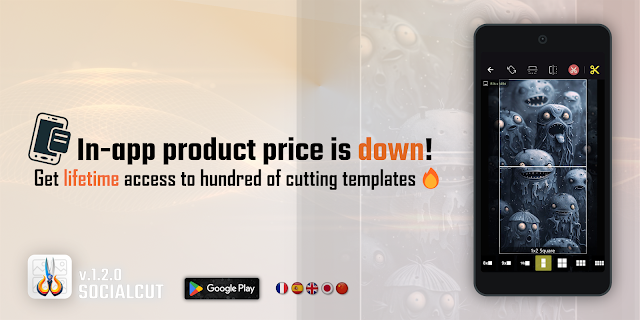[GraphQL] Quick Presentation for beginners + example
What is GraphQL?
GraphQL is a query language for APIs and a runtime for executing those queries. It is designed to give clients exactly the data they need and nothing more. Unlike traditional REST APIs, which often require multiple requests to fetch data from different endpoints, GraphQL allows you to retrieve all necessary data in a single, structured query.
(See an example of using GraphQL below)
Origin of GraphQL
GraphQL was developed by Facebook in 2012 to meet the needs of its mobile applications, which required a more efficient way to fetch and manipulate data. In 2015, Facebook open-sourced GraphQL, allowing the developer community to benefit from this revolutionary technology. Since then, GraphQL has grown in popularity and is now used by many large companies, including GitHub, Shopify, and Twitter.
Tools to Use with GraphQL
To get started with GraphQL, here are some popular tools and libraries that can help:
- GraphQL.js: The reference implementation for building GraphQL servers in JavaScript.
- Apollo Client: A comprehensive GraphQL client for managing queries and caching in front-end applications.
- Relay: Another GraphQL client developed by Facebook, optimized for performance.
- GraphiQL: An interactive development tool for exploring and testing GraphQL APIs.
- Prisma: A modern ORM that simplifies database access with GraphQL.
The Possibilities of GraphQL
GraphQL offers numerous possibilities that make it an attractive alternative to REST APIs:
- Flexible Queries: With GraphQL, you can specify exactly the fields you need, reducing the amount of data transferred.
- Hierarchical Data Fetching: GraphQL allows structuring queries to fetch hierarchical data in a single request.
- Mutations: In addition to queries, GraphQL defines mutations to modify data on the server.
- Subscriptions: GraphQL supports subscriptions, enabling real-time data updates for reactive applications.
The Strengths of GraphQL
Here are some key advantages of using GraphQL:
- Reduced Requests: A single query can retrieve all the necessary data, reducing the number of round-trips between the client and server.
- Strong Typing: GraphQL uses a strong type system to define the available data types, helping to prevent errors and facilitating autocompletion and documentation.
- Flexibility and Scalability: GraphQL allows developers to evolve their APIs without breaking existing queries by simply adding new types and fields.
- Performance Optimization: By requesting only the needed data, GraphQL reduces the amount of data transferred and improves application performance.
Conclusion
GraphQL represents a significant advancement in how developers interact with APIs. Its ability to provide precisely the needed data in a single request, combined with its powerful and flexible tools, makes it an ideal choice for modern applications. Whether you are a beginner looking to learn new skills or an experienced developer seeking to improve your API efficiency, GraphQL offers a robust and scalable solution to meet your needs.
To get started with GraphQL, explore the tools mentioned above, try creating your first API, and see for yourself why so many developers are adopting this revolutionary technology.
Example of Using GraphQL
Let's say you are building a social media application that allows users to post photos, write comments, and follow other users. You want to retrieve the following data in one request:
- User's profile information (name, email, profile picture)
- User's recent posts (each post with the image, caption, and the number of likes)
- Comments on each post (with the commenter's name and the comment text)
Here's how you can use GraphQL to achieve this.
Step 1: Define Your GraphQL Schema
First, you need to define your GraphQL schema. This schema describes the types of data your API will provide and the relationships between them.
type User {
id: ID!
name: String!
email: String!
profilePicture: String!
posts: [Post!]!
}
type Post {
id: ID!
image: String!
caption: String!
likes: Int!
comments: [Comment!]!
}
type Comment {
id: ID!
commenter: User!
text: String!
}
type Query {
user(id: ID!): User
}Step 2: Create a GraphQL Query
Next, you'll create a GraphQL query to retrieve the data. In this query, you'll ask for the user's profile information, their recent posts, and the comments on each post.
query GetUserWithPostsAndComments($userId: ID!) {
user(id: $userId) {
name
email
profilePicture
posts {
image
caption
likes
comments {
commenter {
name
}
text
}
}
}
}
Step 3: Execute the Query
Finally, you'll execute this query against your GraphQL server. Here's how you might do this using JavaScript with a library like Apollo Client.
import { ApolloClient, InMemoryCache, gql } from '@apollo/client';
// Initialize the Apollo Client
const client = new ApolloClient({
uri: 'https://your-graphql-api.com/graphql',
cache: new InMemoryCache(),
});
// Define the query
const GET_USER_WITH_POSTS_AND_COMMENTS = gql`
query GetUserWithPostsAndComments($userId: ID!) {
user(id: $userId) {
name
email
profilePicture
posts {
image
caption
likes
comments {
commenter {
name
}
text
}
}
}
}
`;
// Execute the query
client.query({
query: GET_USER_WITH_POSTS_AND_COMMENTS,
variables: { userId: '12345' },
}).then(response => {
console.log(response.data);
}).catch(error => {
console.error('Error fetching data:', error);
});
Example Response
Here is an example of what the response might look like:
{
"data": {
"user": {
"name": "John Doe",
"email": "john.doe@example.com",
"profilePicture": "http://example.com/profile.jpg",
"posts": [
{
"image": "http://example.com/photo1.jpg",
"caption": "Enjoying the sunshine!",
"likes": 150,
"comments": [
{
"commenter": {
"name": "Jane Smith"
},
"text": "Great photo!"
},
{
"commenter": {
"name": "Bob Johnson"
},
"text": "Looks fun!"
}
]
},
{
"image": "http://example.com/photo2.jpg",
"caption": "Hiking adventure!",
"likes": 200,
"comments": [
{
"commenter": {
"name": "Alice Brown"
},
"text": "Amazing view!"
}
]
}
]
}
}
}
Conclusion
This example demonstrates how you can use GraphQL to retrieve nested and related data in a single request. This approach reduces the number of network requests and allows you to get exactly the data you need, making your application more efficient and responsive.
Some good links to have more details aboit GraphQL:
https://scandiweb.com/blog/graphql-how-to-write-a-schema/





Comments
Post a Comment